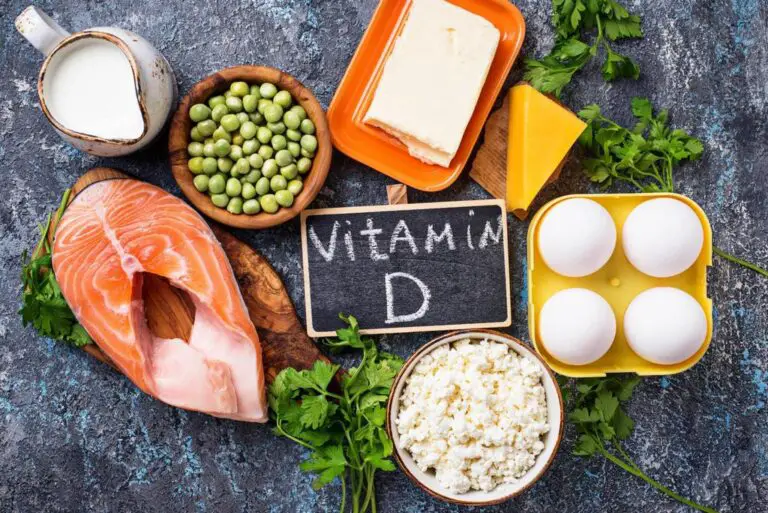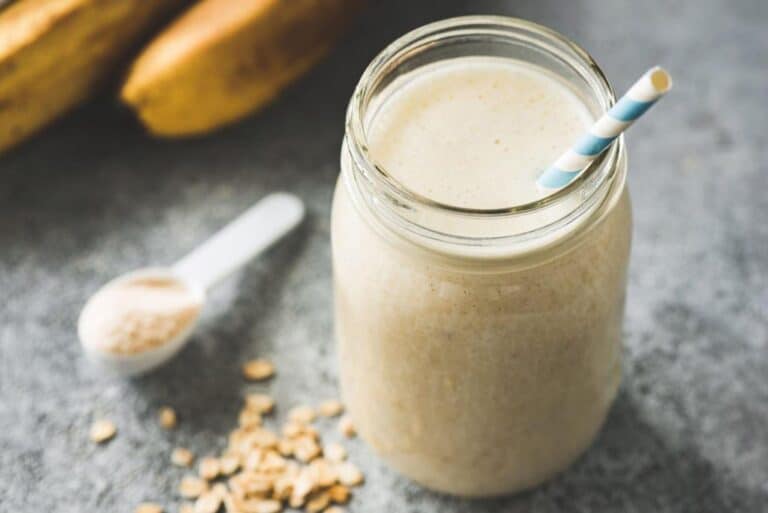Is Lemon Curd a Jam or Marmalade? Demystifying Lemon Curd

When it comes to spreads, there are many different types to choose from. From jelly to jam to marmalade, the variety can be overwhelming. One spread that often gets confused with both jam and marmalade is lemon curd.
After all, these citrus-based spreads can look and taste similar, making it difficult to distinguish between them. In this article, we’re going to demystify lemon curd and explore the differences between jams, marmalades, and this deliciously creamy spread.
In this article, we’ll delve into the unique qualities that make lemon curd stand out from its citrus-based counterparts. We’ll explore its ingredients, texture, and flavor profile, and compare it to the more familiar spreads of jam and marmalade.
By the end of this article, you’ll have a better understanding of what lemon curd is and how it fits into the world of sweet and tangy spreads.
Is Lemon Curd a Jam or Marmalade?
Lemon curd is neither a jam nor a marmalade. Lemon curd is made with lemons, eggs, and butter and contains less sugar than jam or jelly. It must be eaten within weeks of making it and is not considered a traditional preserve. Lemon curd is more like a pudding shots and has a shorter lifespan than lemon marmalade. It must be refrigerated and cannot be canned.
On the other hand, lemon marmalade is more like jam and is a spreadable, sweet-tart topping for various foods. It is made with lemons, sugar, and water and canned using a water bath. Lemon marmalade is shelf-stable for at least a year.
What is Lemon Curd?
Lemon curd is a delightful and zesty spread that’s renowned for its bright, bold flavor and creamy texture. Made with simple ingredients such as lemon juice, sugar, eggs, and butter, it’s an easy recipe to follow, yet it requires a certain level of finesse to get it just right. When made right, the spread is a great mix of sweet and sour flavors that can be used in a lot of different ways in the kitchen.
To make lemon curd, one must first whisk together the eggs and sugar, then add the lemon juice and butter to the mixture. The ingredients are then cooked over low heat while being continuously stirred until they thicken to a custard-like consistency. The resulting mixture is then strained to remove any lumps or solid pieces, creating a smooth and velvety spread.
One of the most unique qualities of lemon curd is its bright yellow hue. This color comes from the abundance of egg yolks used in the recipe, which lend their sunny shade to the finished spread. Additionally, the smooth and creamy texture of lemon curd comes from the butter and eggs used in the recipe, which help to create a silky consistency that’s perfect for spreading.
Lemon curd is a versatile spread that can be used in a wide variety of culinary applications. It can be used as a filling for pastries, cakes, and tarts, or simply spread on cookies, toast, or biscuits. It can also be used as a topping for ice cream, or as a flavoring agent in custards, mousses, and other desserts.
What is Jam: A Fruit-Based Preserve
Jam is a fruit-based preserve that has been enjoyed for centuries. It’s made by cooking down fruit with sugar and pectin, a natural thickener found in fruit, until it reaches a thick, spreadable consistency. Jams are typically sweet and can be made with a variety of fruits, including berries, stone fruits, and citrus.
The history of jam can be traced back to the ancient Romans, who would cook down fruit with honey to create a sweet spread. Over time, the recipe evolved to include sugar as a sweetener, and the process of adding pectin to the mixture was discovered to create a firmer set.
One of the key components of making jam is choosing the right fruit. Ripe, juicy fruit that’s in season will yield the best results. Berries such as strawberries, raspberries, and blueberries are popular choices for making jam, as are stone fruits such as peaches, apricots, and plums. Citrus fruits, such as oranges and lemons, can also be used to make marmalade, a type of jam made with the peel and pulp of the fruit.
To make jam, the fruit is typically washed, pitted, and mashed or chopped. Sugar and pectin are then added to the fruit mixture, and the mixture is boiled until it thickens and reaches a gel-like consistency. The hot jam is then poured into jars and sealed to create a vacuum, which helps to preserve the jam.
Jam is incredibly versatile and can be used in a variety of ways. It’s a popular topping for toast, bagels, and English muffins, and can also be used as a filling for cakes, cupcakes, and tarts. Some people even use jam as a glaze for meats such as ham or as a marinade for chicken or pork.
One of the benefits of making jam at home is that you can control the ingredients and sweetness level. Many store-bought jams are loaded with sugar, but when making your own, you can adjust the sugar to your liking. You can also experiment with adding different flavors, such as spices or herbs, to create a unique and personalized jam.
In addition to being delicious, jam also has health benefits. The fruit used in jam is packed with vitamins and antioxidants, and the natural sugars provide a quick burst of energy. However, it’s important to note that jam is still high in sugar and should be consumed in moderation.
Understanding Marmalade: A Citrusy Spread with Chunks
Marmalade is a citrus-based spread that’s made from fruit, sugar, and water. It’s typically made with oranges, but it can also be made with other citrus fruits such as lemons, grapefruits, or limes. One of the unique qualities of marmalade is its chunky texture, which comes from the use of citrus peel in the recipe.
To make marmalade, the fruit is first sliced into thin pieces, including the peel, which is then simmered in water until it becomes soft. Sugar is then added to the mixture, and the ingredients are cooked over low heat until the mixture thickens and becomes syrupy. The resulting spread is thick and chunky, with a texture that’s unique to marmalade.
The use of citrus peel in marmalade is what gives it its distinctive flavor and texture. The peel is boiled in water to soften it, then cut into thin strips before being added back to the mixture. This gives the spread a chewy texture that contrasts with the soft and sweet fruit. The combination of the tartness from the peel and the sweetness from the fruit creates a complex and balanced flavor that’s perfect for spreading on toast or biscuits.
While orange marmalade is the most common variety, there are many different types of marmalade that can be made using a variety of citrus fruits. For example, lemon marmalade is often made with Meyer lemons, which have a sweeter and less acidic flavor than regular lemons. Grapefruit marmalade, on the other hand, has a more bitter and tangy flavor than other types of marmalade, thanks to the tartness of the fruit.
In addition to being a delicious spread, marmalade also has a long history and cultural significance. It was originally created as a way to preserve citrus fruits during the winter months, and it became popular in England during the 18th century. Today, it’s enjoyed all over the world and is often associated with British cuisine.
How is Lemon Curd Made?
To make lemon curd, you’ll need the following ingredients:
- 3/4 cup fresh lemon juice
- 1 tablespoon grated lemon zest
- 1 cup granulated sugar
- 4 large eggs
- 1/2 cup unsalted butter, cut into small pieces
Here are the steps to follow:
- In a medium saucepan, combine the lemon juice, lemon zest, sugar, and eggs. Whisk the ingredients together until everything is well combined.
- Place the saucepan over medium heat and add the butter. Cook the mixture, whisking constantly, until the butter has melted the mixture, creating thickened lemon curd. This should take about 10-12 minutes.
- Remove the lemon curd from the heat and strain it through a fine-mesh sieve to remove any lumps or pieces of egg that may have cooked. Allow the curd to cool to room temperature before using it in your favorite recipes.
Lemon Curd vs. Jam: The Main Differences
While both lemon curd and jam are fruit-based spreads, they have distinct differences in their ingredients, texture, and flavor. Understanding these differences can help you choose which spread to use for different purposes.
One of the primary differences between lemon curd and jam is their ingredients. Lemon curd is made from lemon juice, sugar, eggs, and butter, while jam is made from fruit, sugar, and pectin. Because lemon curd doesn’t contain fruit, it has a smoother texture than jam and a more pronounced tangy flavor from the lemon juice.
Another difference between lemon curd and jam is their texture. Jam is typically thicker and chunkier than lemon curd, with pieces of fruit in the spread. Lemon curd, on the other hand, has a velvety smooth texture that’s similar to custard. This texture makes it perfect for spreading on delicate pastries or using as a filling for cakes and tarts.
When it comes to flavor, lemon curd and jam have very distinct tastes. Jam is typically sweet and fruity, with the flavor of the fruit shining through. The sweetness of jam comes from the added sugar, which also acts as a preservative. Lemon curd, on the other hand, has a bright, tangy flavor from the lemon juice, with a subtle sweetness from the sugar. The addition of butter gives lemon curd a rich, creamy texture that balances out the tartness of the lemon.
Because of these differences, lemon curd and jam are used in different ways. Jam is typically used as a spread on bread, toast, or bagels, and can also be used as a filling for cakes and pastries. It’s often used to add sweetness to dishes or to balance out the tartness of other ingredients. Lemon curd, on the other hand, is often used as a topping or filling for desserts. Its smooth texture and tangy flavor make it a perfect complement to sweet pastries and cakes.
Another factor to consider is the shelf life of these spreads. Jam, with its high sugar content, can last for a long time without refrigeration. Lemon curd, on the other hand, should be stored in the refrigerator. Lemon curd in fridge will be last and must be consumed within a week or two. The addition of eggs and butter in lemon curd makes it more perishable than jam.
In terms of nutrition, both lemon curd and jam are high in sugar and should be consumed in moderation. However, lemon curd does contain some additional nutrients from the eggs and lemon juice. Eggs are a good source of protein and vitamins, while lemons are high in vitamin C and antioxidants.
| Lemon Curd | Jam | |
| Texture | Smooth and creamy | Thick and chunky |
| Appearance | Bright yellow color | Various colors depending on the fruit used |
| Taste | Tangy and sweet | Sweet and fruity |
| Ingredients | Lemon juice, sugar, eggs, butter | Fruit, sugar, pectin or lemon juice |
| Uses | Filling or topping for desserts | Spread on toast, used in baking or cooking |
| Shelf life | 2-4 weeks in the fridge | 1 year or more if properly preserved |
| Health benefits | Contains vitamins C and E, calcium, and antioxidants | Contains vitamins, minerals, and fiber depending on the fruit used |
Lemon Curd vs. Marmalade: The Main Differences
When it comes to citrus spreads, two of the most popular options are lemon curd and marmalade. While they may seem similar at first glance, there are some key differences that set these two spreads apart.
One of the main differences between lemon curd and marmalade is their texture. Lemon curd is a smooth and creamy spread, whereas marmalade has a chunky texture due to the presence of citrus peel. Lemon curd is made with butter and eggs, which gives it a rich and silky texture. Marmalade, on the other hand, is made with fruit and sugar, resulting in a thicker and chunkier consistency.
Another difference between these two spreads is their flavor. Lemon curd has a bright and tangy flavor, with a subtle sweetness that balances out the tartness of the lemon. Marmalade, on the other hand, has a more complex flavor that’s both sweet and tart, with a slightly bitter note from the citrus peel. The flavor of marmalade can vary depending on the type of citrus fruit used, with orange marmalade being the most common variety.
When it comes to culinary applications, lemon curd and marmalade are used in different ways. Lemon curd is often used as a filling or topping for baked goods such as scones, cakes, and tarts, while marmalade is commonly spread on toast or used as a topping for yogurt or oatmeal. Lemon curd can also be used as a flavoring agent in desserts such as custards and ice cream, whereas marmalade is primarily used as a spread.
Finally, the ingredients used to make these two spreads are also different. Lemon curd is made with lemon juice, sugar, eggs, and butter, while marmalade is made with citrus fruit, sugar, and water. The use of eggs and butter in lemon curd gives it a richer and more decadent flavor, while the use of water in marmalade helps to create a thicker and chunkier texture.
| Lemon Curd | Marmalade | |
| Primary Ingredient | Lemon Juice, Eggs, Butter, Sugar | Citrus Fruit, Sugar |
| Texture | Smooth, Velvety | Chunky, Gelatinous |
| Flavor | Tangy, Citrusy, Sweet | Bitter, Citrusy, Sweet |
| Common Uses | Dessert Toppings, Cake Fillings, Spread for Toast | Toast, Scones, Cakes |
| Storage | Refrigerate, Consume Within 1-2 Weeks | Store in a Cool, Dry Place, Long Shelf Life |
| Nutrition | High in Sugar, Some Nutrients from Eggs and Lemon Juice | High in Sugar, Some Nutrients from Citrus Fruit |
How to Use Lemon Curd
Lemon curd is incredibly versatile and can be used in a variety of ways. Here are just a few ideas:
- Spread it on toast or muffins for a quick and easy breakfast.
- Use it as a filling for cakes, cupcakes, and tarts.
- Mix it with whipped cream and use it as a filling for layer cakes.
- Use it as a topping for pancakes or waffles.
- Mix it with yogurt for a tangy and sweet breakfast or snack.
- Use it as a dip for fruit or cookies.
The possibilities are endless with lemon curd, and its bright and tangy flavor adds a refreshing twist to any dish.
Conclusion
In conclusion, lemon curd is a creamy, tangy spread made from lemon juice, sugar, eggs, and butter. It’s neither a jam nor a marmalade but has its own unique flavor and texture that sets it apart. Lemon curd is incredibly versatile and can be used in a variety of ways, making it a must-have in any kitchen.
Whether you’re spreading it on toast or using it as a filling for cakes and tarts, lemon curd adds a delicious tang to any dish. So, next time you’re at the grocery store, don’t confuse lemon curd with jam or marmalade. Give it a try and discover the delicious world of lemon curd.






